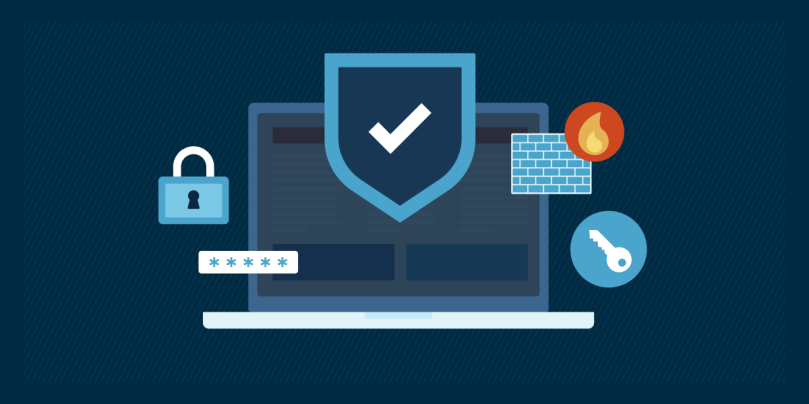
Enterprises face distinctive challenges in safeguarding their networks and sensitive data. As remote work and mobile device usage become increasingly dominant, endpoints, such as laptops, smartphones, and tablets, serve as prime targets for cyber threats. These devices are often the first line of defense, making robust endpoint security practices essential.
Businesses face significant risks, including data breaches, financial losses, and reputational damage, if they fail to implement proper measures. To effectively navigate this complex landscape, enterprises must proactively adopt an approach to endpoint security that encompasses various strategies and technologies. Each security measure is vital in protecting endpoints, from the enforcement of strong password policies to the regular backup of data. Consult with Cybersecurity Experts for effective endpoint security best practices.
In this blog, we will explore critical endpoint security best practices that modern enterprises must implement to stay secure.
What is Endpoint Security?
Endpoint security refers to the strategies and technologies used to protect endpoints, devices that connect to a network, from cyber threats. This includes safeguarding devices against malware, ransomware, phishing attacks, and unauthorized access. Effective endpoint security solutions monitor, manage, and secure endpoints to prevent potential breaches.
Why is Endpoint Security Important?
The rise in remote work and the increasing use of personal devices for business purposes have expanded the attack surface for enterprises. Cybercriminals are continuously developing sophisticated tactics to exploit vulnerabilities in endpoints. A single compromised device can lead to data breaches, financial losses, and reputational damage.
Therefore, implementing strong endpoint security measures is essential for protecting sensitive information and maintaining business integrity.
8 Best Practices of Endpoint Security
- Use Strong Password Policies
Implementing strong password policies is one of the best practices in endpoint security. Passwords act as the first line of defense against unauthorized access to sensitive data and systems. Enforcing password complexity requirements, such as minimum character length, a combination of letters, numbers, and special characters, and regular password changes is essential.
Additionally, utilizing two-factor authentication can add an extra layer of security by requiring users to provide more than one form of verification before accessing a system or application. By partnering with Managed IT Services for SMBs, organizations can significantly enhance their endpoint security posture and mitigate the risk of potential cyber threats.
- Enforce Access Control Measures
Enforcing access control measures is a critical best practice in endpoint security. By controlling who has access to your network and resources, you can significantly reduce the risk of unauthorized users gaining entry and compromising sensitive information.
Access control measures include implementing strong password policies, using multi-factor authentication, and restricting access based on user roles and permissions. Regularly reviewing and updating access controls is essential to ensure that only authorized individuals can access your organization’s endpoints, helping to bolster overall security posture and mitigate potential cyber threats.
- Train Employees on Cybersecurity
Training employees on cybersecurity is a critical best practice for ensuring strong endpoint security within an organization. Employees are often the first line of defense against cyber threats, and providing them with comprehensive training can help minimize the risk of security breaches.
Training should cover topics such as identifying phishing attempts, creating strong passwords, recognizing suspicious emails or links, and understanding the importance of keeping software up to date. Regular training sessions and updates on emerging cybersecurity threats are essential to ensure that employees remain vigilant and proactive in safeguarding company assets.
- Implement Automated Patch Management
Implementing automated patching is considered one of the best practices in endpoint security. Regularly updating software and systems with the latest patches is crucial to addressing vulnerabilities and reducing the risk of cyber threats.
By automating the patch management process, organizations can ensure that endpoints are consistently protected against known security flaws without requiring manual intervention. This helps maintain a strong security posture and safeguard sensitive data from potential breaches. Automated patching enhances overall security and streamlines operations by minimizing downtime and improving efficiency in addressing security vulnerabilities promptly.
- Implement Zero-Trust
Implementing a Zero-Trust approach is considered one of the best practices in endpoint security. This strategy involves verifying every user and device attempting to connect to the network, regardless of location. By assuming that all devices inside and outside the network perimeter are potential threats, organizations can significantly enhance their security posture.
With Zero-Trust, access controls are strictly enforced based on individual user identity and device health status, reducing the risk of unauthorized access and data breaches. Additionally, continuous monitoring and strict authentication mechanisms further ensure that only trusted entities are granted access to sensitive resources, making it an essential component of a comprehensive endpoint security strategy.
- Regularly Back Up Data
Regularly backing up data is a crucial best practice in endpoint security to safeguard against potential data loss or cyber threats. Organizations can mitigate the impact of ransomware attacks, system failures, or accidental deletions by creating and maintaining backups of important files and information. Establishing automated backup processes is recommended to ensure consistency and reliability in data protection.
Additionally, storing backups in secure offsite locations or utilizing cloud-based solutions can further enhance the resilience of endpoint security measures. Prioritizing regular data backups as part of endpoint security protocols is essential for maintaining the integrity and availability of critical information within an organization’s network infrastructure.
Conclusion
As cyber threats constantly evolve, enterprises must prioritize endpoint security to protect sensitive data and maintain operational integrity. Organizations can significantly reduce their risk of cyberattacks by implementing these essential best practices, ranging from comprehensive security strategies and regular updates to employee training and incident response planning. Staying vigilant and proactive in endpoint security safeguards business assets and builds trust with customers and stakeholders, ultimately ensuring long-term success in a digital world.